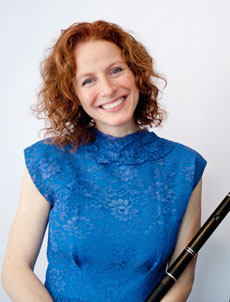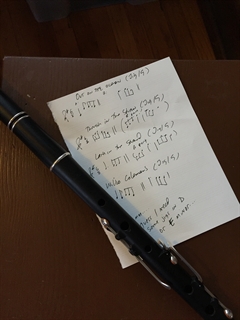4 Steps to Inhabiting Your Irish Music Repertoire
May 5, 2016 by Shannon Heaton

Flute player Shannon Heaton helps Irish music students dig into and really know their tunes in our first guest blog.
It's not what you play, it's the way that you play it.
It's sometimes hard to believe this, especially when you're sitting in a session and you don't know all/any of the tunes being played. There are so many tunes to learn. There are so many great players who seem to have their finger on the pulse of the "right" tunes, even though there are plenty of tunes that they don't know, too.
Really, at the end of the day it serves you best--and it's best for your fellow players and probably the world--to play Out on the Ocean and the Kerry Polka with fine, steady rhythm and tone, much more than it does to hack away at esoteric modal tunes that you don't really know fluently. (Or if you are really hankering for an unusual tune that is still more easily mastered, try my First 50 collection of great 'simple' tunes!)
Here's a four-step guide to mastery of your own traditional music corner… AKA the only thing you can control:
1. Figure out what you already know:
- List all your jigs/slip jigs, all your reels, all your hornpipes, all your slides/polkas, any marches/misc tunes, and all your slower tunes. Include only the tunes you really know--not just tune titles you've heard of or tunes you've "played along with" or tunes you have the sheet music for. List only the tunes you can play by heart, all by yourself. It still counts if you see the title and need a prompt for how a tune starts. This is common, especially if you know many tunes. But once you have the prompt, you should be able to launch right into the tune.
- Now go ahead and make yourself a cheat sheet of all the tunes you know. As you learn more, it'll be handy to refer back to these prompts. Using standard or ABC notation, whatever is easiest for you to read, note the beginning of each tune and the beginning of each B part.
- Note the key signature of each tune. If you don't know how to do this, ask an experienced friend for help.
2. Practice what you already know:
- Record each tune and listen back, noting your rhythmic steadiness, tone.
- Work each tune with a metronome.
- Try switching from one tune to another.
- Check out my ideas on how to practice with purpose in this blog post.
3. Determine what you are missing:
- Look at the tunes you already know. Got lots of D reels? Maybe you need a few in G. Or if your list looks like this:

maybe you need some jigs and OTHER tune types in D or E Minor or A.
- Get recommendations from more advanced local players for those G reels or polkas you've determined you need. If you don't have great players in your locale, ask me. I'll send along suggestions of tunes I've learned and taught as I've moved from Chicago to Clare to Boston.
- Find a trusted/recommended recording of the tune. Listen to it 565 times, until you can sing along with the recording.
- After you've learned to sing the tune, work on playing it, slowly and surely.
- Once you've got the new tune, try pairing it (going right into) a second tune that you already know well. Try playing the new tune first into the old chestnut. Then try it the other way around. If you can make a fluent switch into the new tune, you're starting to know it well.
4. Be mentally prepared to start a few tunes at the next session:
- Imagine yourself contributing a few of YOUR tunes, the tunes that you really know, the next time you are invited to start a set.
- If it's helpful, make yourself a notecard of tunes and the starting measure for each, to tuck in your instrument case--never "forget" what you know again.
Anybody can contribute to the tradition. It's about knowing what you know. It's about how well you can lay it down, not how fast you can go. It's about how pleasantly and intentionally you can connect with the players around you. And it's about being comfortable with where you are today and inspired about how much more there is to learn every time you play.
Shannon Heaton
Boston-based Shannon Heaton specializes in Irish flute and traditional Irish-style singing. Heralded as one of North America's finest traditional musicians, she was named 2016 Traditional Artist Fellow by the Massachusetts Cultural Council, Live Ireland 2010 Female Artist of the Year and Irish American News 2009 Female Musician of the Year.
Heaton is deeply involved with her local Boston traditional music activities (she co-founded Boston’s Celtic Music Fest in 2004 and taught for Boston’s Comhaltas music school for 9 years). She is wildly creative teacher, and has published two flute/fiddle method books. Her latest, First 50, is a collection of notated tunes with accompanying recording, with breath and articulation marks for flute players and bowings for fiddle players.
Related Posts